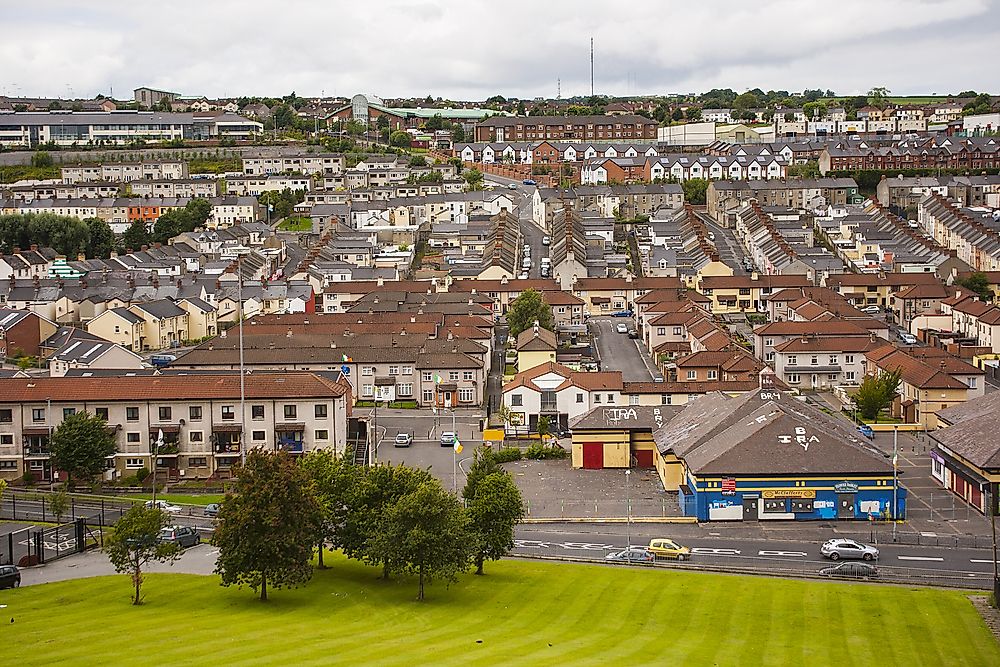What Was Bloody Sunday?

The Bloody Sunday, also known as the Bogside Massacre, took place on January 30, 1972, in the Bogside region of Derry, Northern Ireland. The Parachute Regiment wing of the British Army shot at unarmed civilians who held a peaceful march against internment. Thirteen people died on the spot while the 14th person died four months later from bullet wounds.
Background of the Protest
The Catholics and Irish nationals perceived Derry City as the epitome of misrule with unfair elections, deprivation of public amenities, and discriminative resource allocation. Rail routes to the city were closed down and housing units were in an appalling state.
Many civil organizations were formed to fight for people’s rights. One of them was Northern Ireland Civil Rights Association (NICRA) and the Northern Resistance Movement. The British army was sent to the North to maintain order. On August 9, 1971, violence escalated leading to an order of Internment which led to further unrest and violence. There were several deaths of both civilians and soldiers. Some residents of North Ireland joined the Irish Republican Army (IRA).
Pre-March Events
On January 18, 1972, the Prime Minister of North Ireland, Brian Faulkner, gave an order banning any public gatherings. On January 22, 1972, residents held a protest against internment orders at Magilligan near Derry. They marched to the internment remand but were stopped by soldiers. There was a scuffle as the protestors tried to force their way and also threw stones. The Parachute Regiment soldiers used rubber bullets and beat others leading to major casualties.
Despite the ban, NICRA organized another march in protest of internment the following Sunday in Derry. The authorities allowed them to proceed to all Catholic areas except the Guildhall Square since this could have led to riots. An army leader, Major General Robert Ford, gave orders that the first battalion soldiers of the Parachute Regiment should travel to Derry and arrest rioters if need be. The soldiers arrived in Derry on the morning of the Bloody Sunday and positioned themselves.
Bloody Sunday and the Bogside Massacre
The march began at 2:45 pm at the Bishop’s Field. The program was to march to the Guildhall and hold a rally. An estimated 10,000 to 15,000 people participated in the march. The participants walked along William Street towards City Centre but were blocked by the Army. On meeting the barriers the organizers diverted the people to Rossville Street. They planned to have a rally at Free Derry Corner. However, at this point, some of the people started throwing stones at the army officers. The soldiers reacted by using a water cannon, CS gas, and rubber bullets to disperse the crowd. As the crowd dispersed, they spotted paratroopers in a three-story house near the William Street and pelted them with stones. The paratroopers started shooting at the crowd indiscriminately. This happened at 3:35 pm and with the first two people dying on the spot. At 4:07 pm the soldiers started chasing the people using armored cars and on foot across Rossville street into Bogside. The army vehicles knocked down two people. The soldiers became more violent and started, beating people, clubbing anybody nearby with their rifle butts and firing from very close range. A contingent of paratroopers positioned themselves on a rubble barricade about 80 yards (73 meters) and fired at the people killing six on the spot and wounding many. More people were killed or injured in the Glenfada Park and across car parks.
Consequences of the Bloody Sunday
A total of 13 civilians lay dead while another died of gun wounds four months later. No soldier was injured or killed. A tribunal was set to investigate the matter. On April 10, 1972, the findings of the tribunal supported the paratroopers’ report that the civilians were armed and the soldiers acted in self-defense.











